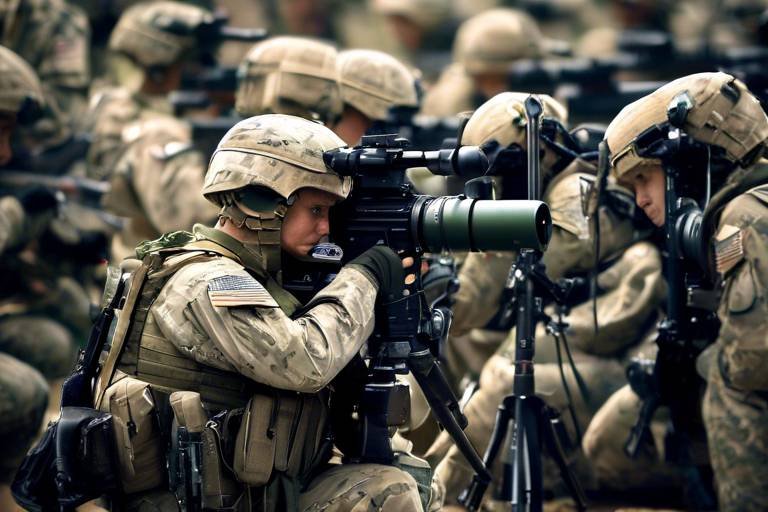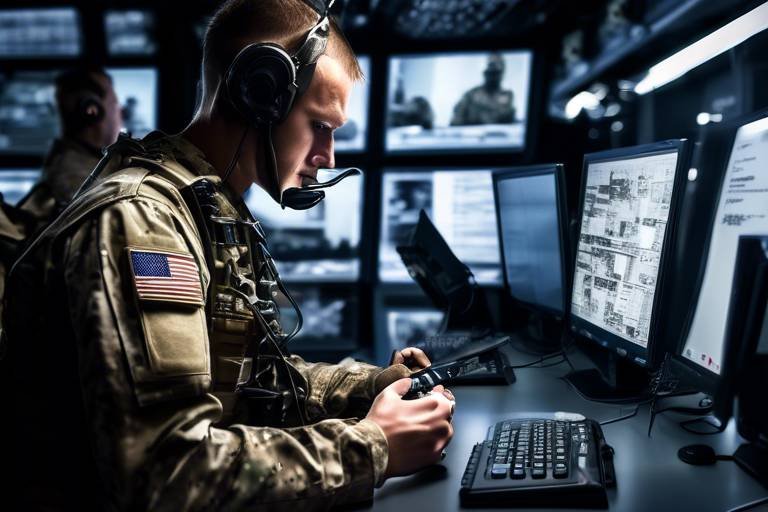How Advanced Defense Systems Address Asymmetric Warfare Challenges
In today's world, the landscape of warfare has drastically changed, leaving traditional military strategies in the dust. Asymmetric warfare, where weaker opponents leverage unconventional tactics to exploit the vulnerabilities of stronger forces, has become the norm. This shift demands a fresh approach to defense, one that incorporates advanced technologies and innovative strategies. In this article, we will explore how modern defense systems are specifically designed to tackle the unique challenges posed by asymmetric threats, ensuring that military operations remain effective and adaptable in an unpredictable environment.
Understanding asymmetric warfare is crucial for developing effective defense strategies. This type of conflict often involves a disparity in power between opposing forces, where the weaker side employs unconventional tactics such as guerrilla warfare, terrorism, and cyber attacks to level the playing field. Conventional military forces face significant challenges when confronting these tactics, including the difficulty of identifying and engaging elusive enemies. The unpredictable nature of asymmetric warfare often leads to prolonged conflicts, where traditional military might is less effective. As a result, it is imperative for modern defense systems to evolve and adapt to these new realities.
At the forefront of addressing asymmetric warfare challenges are cutting-edge technologies that redefine military operations. These technologies include Unmanned Aerial Vehicles (UAVs), advanced cyber warfare capabilities, and artificial intelligence. Each of these innovations plays a critical role in enhancing military effectiveness against asymmetric threats, allowing for more precise and strategic responses to complex battlefield scenarios.
UAVs have transformed military operations by providing surveillance and strike capabilities without risking human lives. These aerial vehicles can gather real-time intelligence, conduct reconnaissance missions, and even engage targets with precision. The strategic advantages of UAVs are manifold:
- Reduced Risk: UAVs allow military forces to operate in high-risk environments without putting personnel in danger.
- Enhanced Surveillance: Their ability to cover vast areas and provide detailed imagery is invaluable in asymmetric warfare scenarios.
- Cost-Effectiveness: Operating UAVs is often less expensive than deploying traditional manned aircraft.
ISR capabilities are essential for understanding enemy movements and intentions. Advanced ISR technologies, such as satellite imagery and real-time drone feeds, support decision-making in complex asymmetric environments. By providing actionable intelligence, these systems enable military commanders to anticipate enemy actions and respond effectively. The integration of AI into ISR systems further enhances their capabilities, allowing for quicker data processing and analysis, which is crucial in fast-paced conflict situations.
The deployment of combat drones has reshaped engagement strategies in asymmetric conflicts. For instance, during operations in regions like the Middle East, combat drones have been pivotal in targeting high-value insurgent leaders while minimizing collateral damage. Their ability to operate in diverse environments and adjust to changing battlefield conditions makes them a game-changer in modern warfare. The success of these unmanned systems demonstrates their impact on operational outcomes, shifting the balance of power in favor of technologically advanced military forces.
In the digital age, cyber warfare plays a pivotal role in asymmetric conflicts. Cyber capabilities enable military forces to disrupt enemy operations, gather intelligence, and protect critical infrastructure from cyber attacks. As adversaries increasingly rely on technology, the importance of cyber warfare cannot be overstated. By employing advanced cyber tactics, military forces can undermine the operational effectiveness of their opponents, creating a significant advantage in asymmetric engagements.
Counterinsurgency is a key component of addressing asymmetric threats. Advanced defense systems employ various strategies to combat insurgent tactics and foster stability in conflict zones. One critical aspect of these strategies is community engagement, which focuses on building trust within local populations. By integrating community support into military operations, advanced defense systems can reduce insurgent influence and promote long-term stability. This approach not only enhances operational effectiveness but also addresses the root causes of conflict.
Effective counterinsurgency requires building trust within local communities. Advanced defense systems recognize the importance of community engagement and actively work to integrate local perspectives into their operational frameworks. This approach fosters cooperation, which is essential for undermining insurgent narratives and reducing their recruitment capabilities. By prioritizing community support, military forces can create a more sustainable path to peace.
Collaboration among military and intelligence agencies enhances effectiveness in counterinsurgency. Advanced defense systems facilitate intelligence sharing, improving situational awareness and operational success. By breaking down silos and promoting inter-agency cooperation, military forces can respond more effectively to asymmetric threats. This collaborative approach not only amplifies the impact of individual efforts but also creates a more cohesive strategy against insurgency.
Looking ahead, the evolution of defense systems in response to emerging asymmetric threats will be shaped by technological advancements and strategic shifts in military doctrine. As adversaries continue to adapt and innovate, so too must military forces. The future may see even greater integration of AI, enhanced cyber capabilities, and more sophisticated UAV technologies. These advancements will not only improve military effectiveness but also redefine the very nature of warfare in an increasingly complex global landscape.
Q1: What is asymmetric warfare?
A1: Asymmetric warfare refers to conflicts where opposing forces have unequal military resources and strategies. Weaker opponents use unconventional tactics to exploit the vulnerabilities of stronger forces.
Q2: How do UAVs contribute to modern military operations?
A2: UAVs provide surveillance, reconnaissance, and strike capabilities without risking human lives. They enhance military effectiveness by allowing for real-time intelligence gathering and precise targeting.
Q3: Why is community engagement important in counterinsurgency?
A3: Building trust within local communities helps reduce insurgent influence and fosters cooperation. It addresses the root causes of conflict, making military operations more sustainable.
Q4: What role does cyber warfare play in asymmetric conflicts?
A4: Cyber warfare disrupts enemy operations, gathers intelligence, and protects critical infrastructure. It is essential for undermining adversaries who rely on technology in modern warfare.

The Nature of Asymmetric Warfare
Understanding asymmetric warfare is crucial for developing effective defense strategies. Unlike conventional warfare, where two evenly matched armies face off, asymmetric warfare involves conflicts between parties of unequal strength. This often means that a weaker opponent employs unconventional tactics to exploit the vulnerabilities of a more powerful adversary. Think of it like a game of chess where one player has all the pieces while the other relies on clever strategies to outmaneuver their opponent. The characteristics of asymmetric warfare can be diverse, but they typically include guerrilla tactics, sabotage, and psychological warfare.
One of the defining features of asymmetric warfare is the use of unconventional tactics. Weaker forces often resort to hit-and-run attacks, ambushes, and the use of improvised explosive devices (IEDs) to level the playing field. These tactics are designed to create chaos and uncertainty, making it difficult for conventional forces to respond effectively. For instance, insurgents may blend into civilian populations, making it challenging for military forces to distinguish between combatants and non-combatants. This not only complicates military operations but also raises ethical dilemmas regarding civilian safety.
Moreover, asymmetric warfare presents significant challenges for conventional military forces. The traditional military hierarchy and rigid command structures can hinder rapid responses to the fluid and unpredictable nature of asymmetric threats. As a result, conventional forces must adapt their strategies and embrace more flexible operational frameworks. This often involves integrating advanced technologies and intelligence capabilities to enhance situational awareness and decision-making.
Another aspect to consider is the psychological dimension of asymmetric warfare. The weaker party often seeks to undermine the morale of the stronger opponent. This can be achieved through propaganda, misinformation, and targeted attacks that aim to create fear and uncertainty. The goal is not just to win battles but to erode the will of the more powerful enemy to continue the fight. In this context, understanding the enemy’s motivations and societal dynamics becomes essential for crafting effective counter-strategies.
In summary, the nature of asymmetric warfare is characterized by its unconventional tactics, psychological warfare, and the challenges posed to conventional military forces. As we delve deeper into the key technologies that define modern defense systems, it becomes evident that addressing these asymmetric challenges requires innovative solutions and a shift in military doctrine.
- What is asymmetric warfare? Asymmetric warfare refers to conflicts between parties of unequal strength, where the weaker opponent uses unconventional tactics to exploit the vulnerabilities of a more powerful adversary.
- What are some examples of asymmetric warfare tactics? Common tactics include guerrilla warfare, ambushes, sabotage, and the use of improvised explosive devices (IEDs).
- How do conventional military forces adapt to asymmetric threats? Conventional forces must embrace flexibility, integrate advanced technologies, and enhance intelligence capabilities to effectively respond to asymmetric challenges.
- Why is psychological warfare important in asymmetric conflicts? Psychological warfare aims to undermine the morale of the stronger opponent, creating fear and uncertainty, which can lead to a loss of will to fight.

Key Technologies in Advanced Defense Systems
The landscape of modern warfare is evolving at a breakneck speed, and the emergence of asymmetric warfare has compelled military forces worldwide to adapt rapidly. To tackle these challenges head-on, advanced defense systems are being equipped with cutting-edge technologies that enhance their operational effectiveness. Among these technologies, drones, cyber warfare capabilities, and artificial intelligence stand out as pivotal tools that redefine how military engagements are conducted. These innovations not only empower traditional forces but also provide them with the necessary edge to counter unconventional threats.
First on the list are Unmanned Aerial Vehicles (UAVs), commonly known as drones. UAVs have revolutionized military operations by offering unparalleled surveillance and strike capabilities without placing human lives at risk. Imagine having a bird's-eye view of the battlefield, gathering real-time intelligence while remaining out of harm's way. This strategic advantage allows military planners to make informed decisions swiftly. In asymmetric warfare scenarios, where threats can emerge from unexpected quarters, UAVs provide a crucial layer of situational awareness.
Integral to the success of UAV operations is the Intelligence, Surveillance, and Reconnaissance (ISR) capabilities they bring to the table. Advanced ISR technologies enable forces to monitor enemy movements, assess their intentions, and predict their next moves. This intelligence is vital in complex asymmetric environments where conventional tactics may not suffice. By leveraging sophisticated sensors and data analytics, military forces can gain insights that were previously unattainable. The result? Enhanced decision-making processes and a greater likelihood of mission success.
Combat drones have made their mark on the battlefield, reshaping engagement strategies in asymmetric conflicts. For instance, during the recent conflicts in the Middle East, combat drones played a crucial role in targeting insurgent positions with pinpoint accuracy. Their ability to loiter over areas of interest for extended periods allows for persistent surveillance, enabling forces to strike when the moment is right. The implications of such technology are profound, as they not only minimize collateral damage but also shift the balance of power in favor of those who wield them effectively.
In today’s digital age, cyber warfare capabilities have become a cornerstone of modern military strategy. As asymmetric conflicts often involve non-state actors who exploit digital vulnerabilities, military forces must be equipped to counter these threats. Cyber capabilities allow for the disruption of enemy operations, targeting their communication networks, and even their critical infrastructure. By launching cyber offensives, military units can create chaos within enemy ranks, making it difficult for them to coordinate their efforts. This not only protects friendly forces but also enhances overall operational effectiveness.
As we delve deeper into the implications of these technologies, it becomes evident that they are not just tools of warfare; they represent a paradigm shift in how conflicts are approached. The integration of drones, ISR capabilities, and cyber warfare into military operations is akin to equipping a knight with a suit of armor that is both impenetrable and lightweight—allowing for greater agility and adaptability on the battlefield. As these technologies continue to evolve, they will undoubtedly shape the future of warfare, challenging traditional notions of power and dominance.
- What are the main advantages of using drones in asymmetric warfare? Drones provide surveillance and strike capabilities without risking human lives, allowing for more precise targeting and reduced collateral damage.
- How do cyber warfare capabilities impact modern military operations? Cyber warfare capabilities disrupt enemy operations and protect critical infrastructure, enhancing operational effectiveness in asymmetric conflicts.
- What role does ISR play in military strategy? ISR capabilities are essential for monitoring enemy movements and making informed decisions in complex environments, improving the chances of mission success.
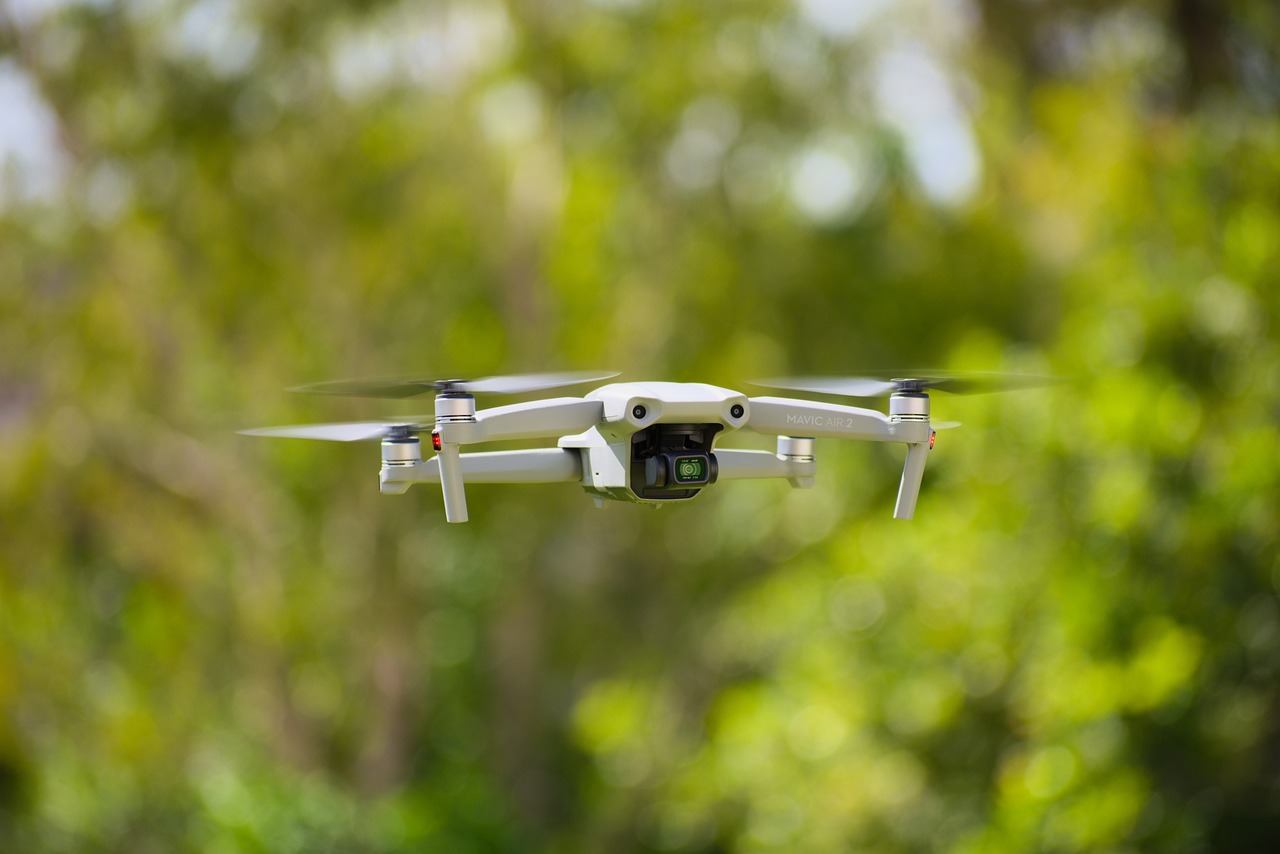
Unmanned Aerial Vehicles (UAVs)
Unmanned Aerial Vehicles, commonly known as UAVs or drones, have revolutionized the landscape of modern warfare. These remarkable machines provide military forces with unparalleled surveillance and strike capabilities, all while keeping human lives out of harm's way. Imagine being able to monitor enemy movements from miles away or engage in precision strikes without putting a single soldier on the front lines—this is the power that UAVs bring to the table. Their strategic advantages in asymmetric warfare contexts cannot be overstated, as they allow for a level of operational flexibility and responsiveness that traditional military assets simply cannot match.
One of the most significant benefits of UAVs is their ability to conduct Intelligence, Surveillance, and Reconnaissance (ISR) missions. By gathering real-time data and transmitting it back to command centers, UAVs enhance situational awareness, enabling military leaders to make informed decisions on the fly. This capability is especially crucial in asymmetric conflicts, where the enemy often employs unconventional tactics that can catch conventional forces off guard. With UAVs, military operations can be adjusted dynamically, responding to threats as they emerge rather than relying on pre-planned strategies that may no longer be applicable.
Moreover, UAVs have taken on various operational roles in asymmetric warfare. For instance, they can be used for target acquisition, providing vital information about enemy positions, or for combat support, delivering precision strikes against high-value targets with minimal collateral damage. The ability to fly at high altitudes and remain airborne for extended periods allows UAVs to cover vast areas, making them invaluable for monitoring insurgent movements in remote or hostile environments.
To illustrate their impact, consider the following table that highlights some key features of UAVs and their operational roles:
| Feature | Operational Role |
|---|---|
| Long Endurance | Persistent Surveillance |
| High Altitude | Target Acquisition |
| Precision Strike Capability | Combat Support |
| Real-time Data Transmission | Intelligence Gathering |
The operational roles of UAVs extend beyond mere reconnaissance and combat. They also play a vital role in psychological operations, where their presence can deter enemy actions simply by being in the air. The fear of drone strikes can disrupt insurgent operations and influence their decision-making processes, thereby providing an upper hand to conventional forces. In essence, UAVs serve as a force multiplier, enhancing the overall effectiveness of military operations against asymmetric threats.
As we look to the future, the integration of UAVs into military strategy will only deepen. With advancements in technology, we can expect to see even more sophisticated drones equipped with enhanced AI capabilities, capable of making autonomous decisions in the heat of battle. This evolution will further transform how military forces engage with asymmetric threats, providing them with tools that were once the stuff of science fiction.

Intelligence, Surveillance, and Reconnaissance (ISR)
The realm of is a critical component in modern military operations, especially when faced with the complexities of asymmetric warfare. Imagine standing on a battlefield where the enemy is not always visible, where they blend in with civilians, and where conventional tactics fall short. This is where ISR comes into play, acting as the eyes and ears of military forces, providing them with the necessary information to make informed decisions.
At its core, ISR encompasses a range of activities designed to gather, analyze, and disseminate intelligence. It involves the use of advanced technologies and methodologies to monitor enemy movements, assess threats, and predict future actions. For instance, the integration of satellite imagery, signal intelligence, and human intelligence creates a comprehensive picture of the operational environment. This multi-faceted approach not only enhances situational awareness but also aids in the identification of key targets and potential vulnerabilities.
One of the most significant advancements in ISR capabilities is the use of unmanned aerial systems (UAS), which provide real-time data without putting human lives at risk. These systems can fly over hostile territories, capturing high-resolution images and video feeds, which are then analyzed to inform strategic decisions. The ability to conduct persistent surveillance allows military planners to maintain a constant watch over areas of interest, enabling them to react swiftly to emerging threats.
Moreover, advanced data analytics plays a pivotal role in interpreting the vast amounts of information collected through ISR operations. By employing machine learning algorithms and artificial intelligence, military analysts can sift through data more efficiently, identifying patterns and anomalies that might indicate enemy activity. This not only speeds up the decision-making process but also enhances the accuracy of intelligence assessments.
However, ISR is not without its challenges. The sheer volume of data generated can be overwhelming, and there is always the risk of information overload. Additionally, the adversaries in asymmetric warfare are often adept at countering ISR efforts, employing tactics such as deception and camouflage to evade detection. Therefore, military forces must continuously adapt their ISR strategies to stay one step ahead.
In conclusion, the role of ISR in asymmetric warfare cannot be overstated. It serves as a force multiplier, enabling conventional military forces to operate effectively in environments where they might otherwise be at a disadvantage. As technology continues to evolve, the integration of ISR capabilities will only become more sophisticated, paving the way for more effective military operations in the future.
- What is ISR? - ISR stands for Intelligence, Surveillance, and Reconnaissance, which involves gathering and analyzing information to support military operations.
- How does ISR benefit military operations? - ISR enhances situational awareness, helps identify threats, and informs strategic decision-making, particularly in asymmetric warfare contexts.
- What technologies are used in ISR? - Technologies used in ISR include satellite imagery, drones, signal intelligence, and advanced data analytics tools.
- What challenges does ISR face? - Challenges include information overload, adversary countermeasures, and the need for continuous adaptation of strategies.
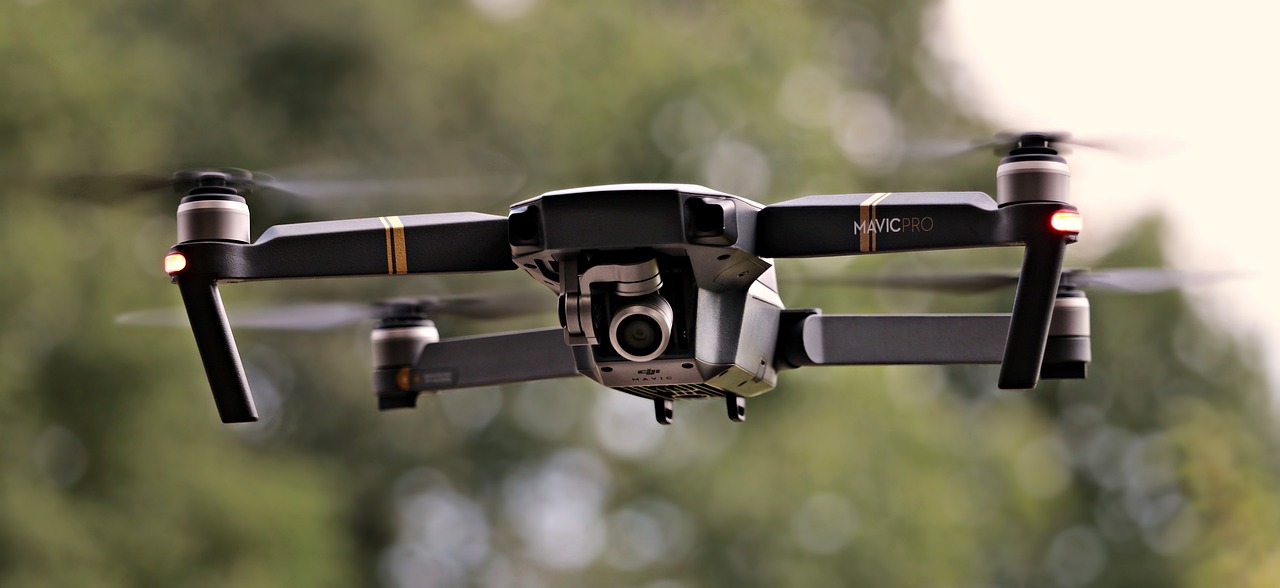
Combat Drones in Action
When we think about modern warfare, combat drones often come to mind as the game-changers of our time. These unmanned aerial vehicles (UAVs) have revolutionized how military operations are conducted, offering a unique blend of precision, efficiency, and safety. Imagine being able to conduct surveillance and strike missions without putting a single soldier in harm's way. That's the power of combat drones, and their impact on asymmetric warfare cannot be overstated.
One of the most significant advantages of combat drones is their ability to operate in environments that are too dangerous for traditional military assets. For instance, in regions where insurgents blend seamlessly into civilian populations, drones can provide critical intelligence without risking collateral damage. They fly high above the battlefield, equipped with advanced sensors and cameras that can capture high-definition images and videos, allowing commanders to make informed decisions based on real-time data.
Let's take a look at a few notable examples of how combat drones have been deployed in asymmetric conflicts:
- Operation Enduring Freedom: In Afghanistan, combat drones played a pivotal role in targeting Taliban and Al-Qaeda leaders. Their ability to loiter over a target area for extended periods enabled military forces to track movements and strike with precision when the moment was right.
- Operation Inherent Resolve: During the fight against ISIS in Iraq and Syria, drones were used extensively for both reconnaissance and targeted strikes. The intelligence gathered by drones helped coalition forces to dismantle ISIS's operational capabilities while minimizing civilian casualties.
- Counterinsurgency in Yemen: In Yemen, combat drones have been instrumental in targeting Houthi insurgents. The use of drones not only allowed for precise strikes but also provided critical intelligence to ground forces, enhancing their effectiveness in a complex and fluid battle space.
These examples illustrate how combat drones have reshaped engagement strategies. They allow for a level of situational awareness that was previously unattainable. With the ability to gather intelligence and conduct strikes from a safe distance, military forces can engage asymmetric threats more effectively. However, the use of drones is not without controversy. Ethical concerns arise regarding the potential for civilian casualties and the psychological impact on both operators and targeted populations.
Moreover, as military technology continues to evolve, so does the battlefield. Insurgent groups are adapting to the presence of drones, employing countermeasures such as electronic warfare tactics to jam signals or using simple yet effective methods to hide from drone surveillance. This cat-and-mouse game underscores the need for continuous innovation in drone technology and operational tactics.
In conclusion, combat drones are not just tools of war; they symbolize a significant shift in military strategy in the face of asymmetric threats. As we move forward, the integration of artificial intelligence and machine learning into drone operations promises to enhance their capabilities even further, making them an indispensable asset in modern warfare.
Q1: How do combat drones differ from traditional military aircraft?
A1: Combat drones operate without a human pilot on board, allowing for missions in high-risk environments without putting lives at risk. They can also stay airborne for longer periods and are often equipped with advanced surveillance technology.
Q2: Are there ethical concerns regarding the use of combat drones?
A2: Yes, the use of combat drones raises several ethical questions, particularly regarding civilian casualties and the lack of accountability in drone strikes. These concerns have sparked debates about the rules of engagement and the need for oversight.
Q3: How do insurgents counter the use of drones?
A3: Insurgents may employ various tactics to counter drones, including using electronic warfare to disrupt communication signals, employing camouflage to hide from surveillance, and utilizing small arms fire to target drones directly.
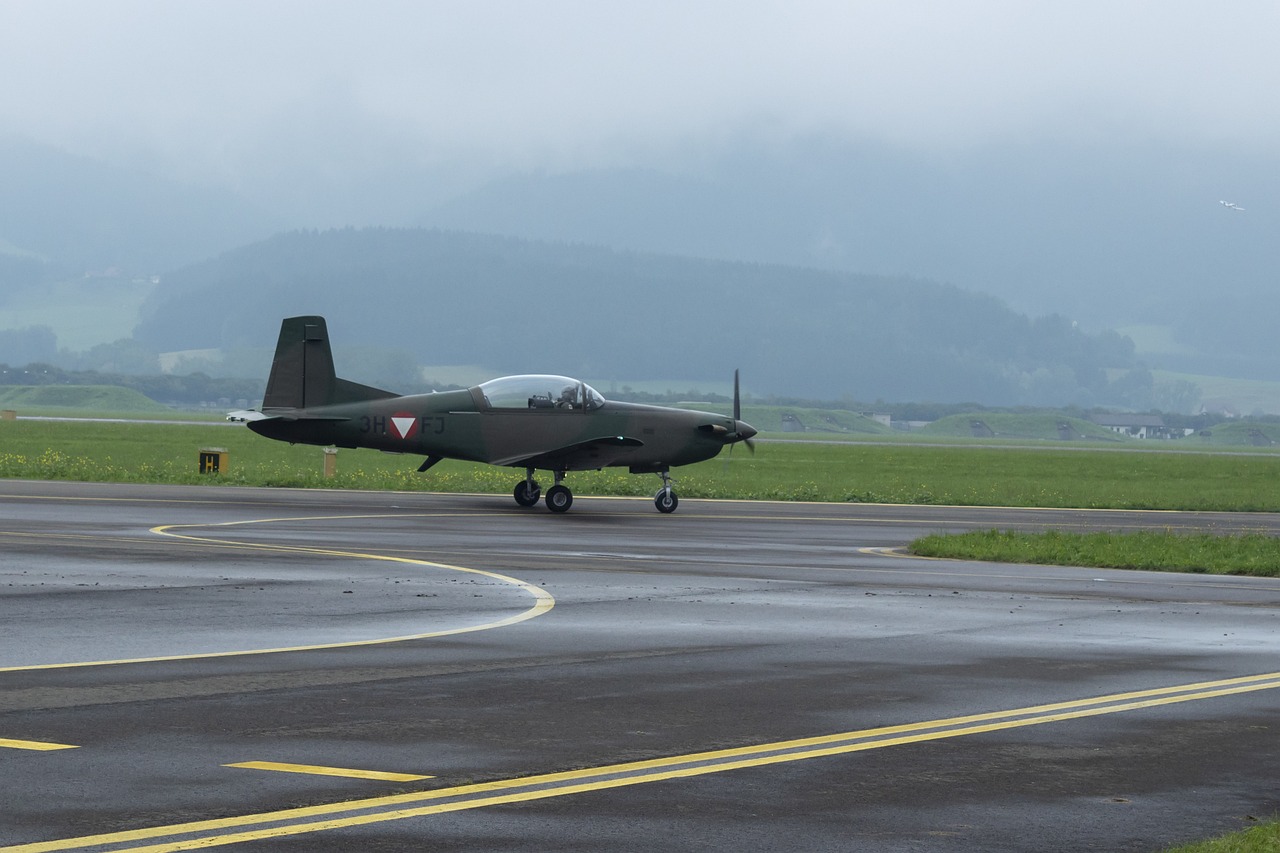
Cyber Warfare Capabilities
In today's interconnected world, cyber warfare has emerged as a game-changer in asymmetric conflicts. Unlike traditional battlefields, the cyber realm offers a unique and often invisible front where weaker opponents can challenge more powerful adversaries by exploiting vulnerabilities in digital infrastructures. Imagine a situation where a small group of insurgents can disrupt a nation's power grid or steal sensitive military data without ever stepping foot on the battlefield. This is the essence of cyber warfare—an arena where the lines between offense and defense blur, and the stakes are incredibly high.
One of the most significant aspects of cyber warfare is its ability to disrupt enemy operations. For instance, by launching a well-coordinated cyber attack, a less equipped force can temporarily incapacitate advanced military systems, causing chaos and confusion. This tactic not only undermines the enemy's operational capabilities but also instills fear and uncertainty among troops who may feel vulnerable to unseen attacks. In this context, the cyber domain becomes a powerful tool for asymmetric warfare, enabling weaker parties to level the playing field.
Moreover, cyber warfare is not just about attacking; it's also about defending critical infrastructure. Governments and military organizations are increasingly investing in robust cybersecurity measures to safeguard their networks and systems from potential intrusions. This defensive posture includes employing advanced technologies such as artificial intelligence and machine learning to detect and neutralize threats before they can inflict damage. The constant evolution of cyber threats means that defense strategies must be equally dynamic, adapting to new tactics and techniques employed by adversaries.
To better understand the impact of cyber warfare, consider the following table that highlights key capabilities and their implications:
| Capability | Description | Implication |
|---|---|---|
| Network Disruption | Attacks that incapacitate communication and operational networks. | Creates chaos and reduces effectiveness of military operations. |
| Data Theft | Unauthorized access to sensitive information. | Compromises operational security and strategic plans. |
| Cyber Espionage | Monitoring and collecting intelligence through digital means. | Enhances situational awareness and informs decision-making. |
| Influence Operations | Using social media and online platforms to sway public opinion. | Undermines trust in institutions and can incite unrest. |
As we delve deeper into the implications of cyber warfare, it becomes evident that the battlefield of the future is not solely defined by physical confrontations but also by the strategic use of technology. Military planners must consider how to integrate cyber capabilities into their overall defense strategies. This includes training personnel not just in traditional warfare tactics but also in cyber operations, ensuring a comprehensive approach to modern conflict.
In conclusion, cyber warfare capabilities represent a significant shift in how asymmetric threats are addressed. As nations continue to evolve their military doctrines to incorporate these new realities, the importance of cyber capabilities will only grow. The question remains: how prepared are we to face the challenges posed by this invisible but potent form of warfare?
- What is cyber warfare? Cyber warfare refers to the use of digital attacks to disrupt, damage, or destroy information systems of an adversary.
- How does cyber warfare impact traditional military operations? It can undermine operational effectiveness by disrupting communication, stealing sensitive data, and creating confusion.
- What measures are taken to defend against cyber attacks? Organizations implement cybersecurity protocols, invest in technology, and train personnel to safeguard against potential threats.
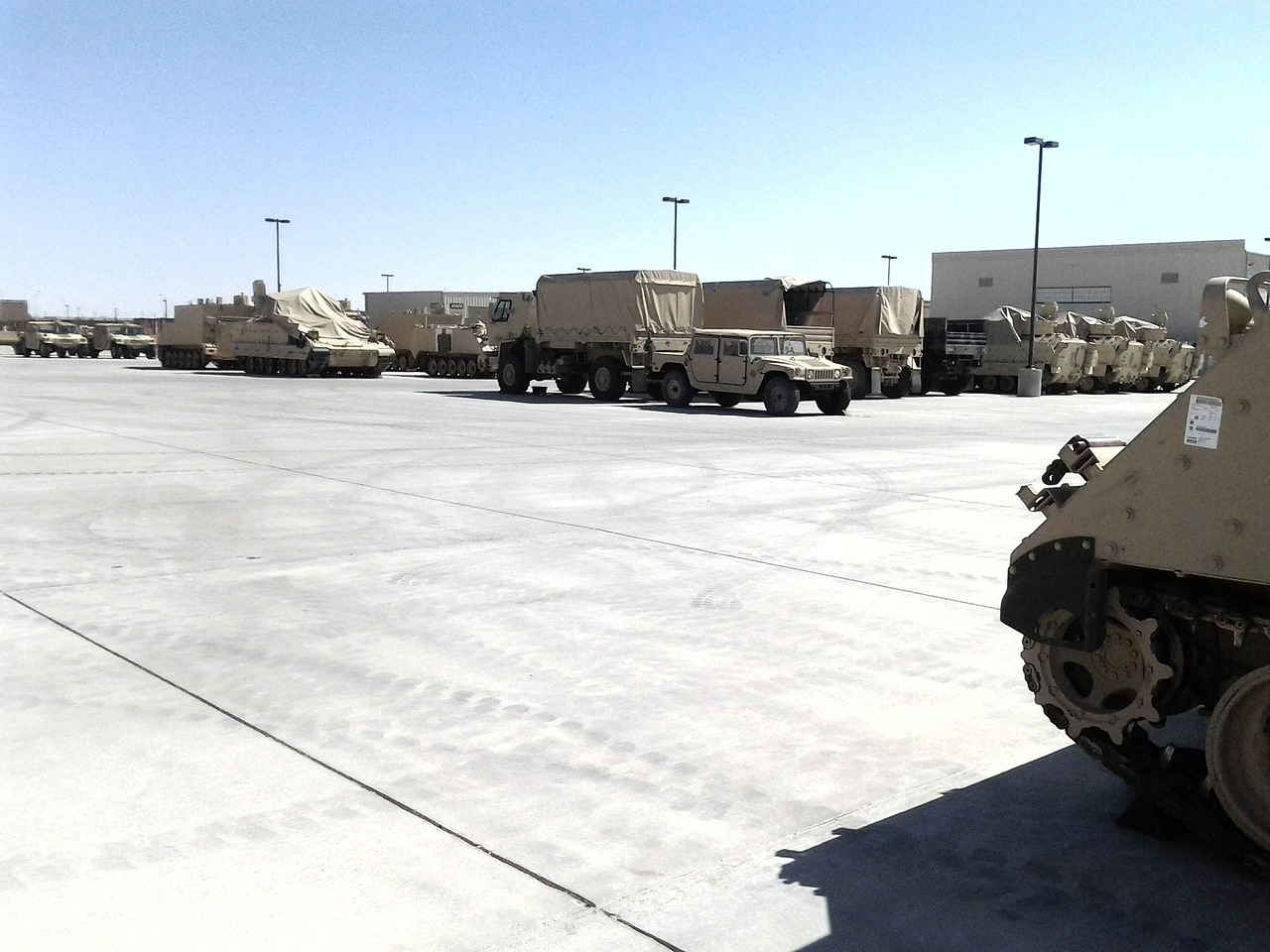
Counterinsurgency Strategies
Counterinsurgency is more than just a military operation; it’s a complex blend of tactics, strategies, and community relations aimed at defeating insurgent groups while fostering stability. In an era where asymmetric warfare is prevalent, understanding and implementing effective counterinsurgency strategies is crucial. These strategies are not only about engaging the enemy on the battlefield but also about winning the hearts and minds of the local population. After all, a community that feels supported and secure is less likely to turn to insurgents for protection or guidance.
One of the primary goals of counterinsurgency is to disrupt the insurgents' influence and operations. This can be achieved through a variety of methods, including military presence, intelligence gathering, and community engagement. In fact, advanced defense systems have increasingly integrated these elements into their operational frameworks. By establishing a robust military presence, they can deter insurgent activity while simultaneously providing security to local communities. This dual approach not only helps in neutralizing threats but also fosters an environment conducive to peace and stability.
Moreover, community engagement is a cornerstone of effective counterinsurgency. Engaging with local populations is essential for building trust and understanding their needs and concerns. Military forces are encouraged to work alongside local leaders and organizations, ensuring that their strategies align with the community's interests. This collaborative approach can significantly reduce insurgent influence, as locals often prefer to support forces that are genuinely invested in their well-being. For instance, initiatives that focus on education, healthcare, and economic development can provide alternatives to insurgency, thereby undermining the insurgents' appeal.
Intelligence sharing and collaboration among military and intelligence agencies also play a vital role in counterinsurgency strategies. In a world where information is power, the ability to gather, analyze, and share intelligence can make all the difference. Advanced defense systems utilize sophisticated technologies to enhance situational awareness, allowing for quicker and more informed decision-making. This intelligence-driven approach enables forces to anticipate insurgent movements and disrupt their operations effectively. The synergy created through collaboration can lead to a more cohesive strategy that addresses the multifaceted nature of insurgency.
To illustrate the effectiveness of these strategies, consider the following table that outlines key components of successful counterinsurgency operations:
| Strategy Component | Description | Impact on Insurgency |
|---|---|---|
| Military Presence | Establishing a visible military force in conflict areas. | Deters insurgent activity and reassures the local population. |
| Community Engagement | Building relationships with local leaders and residents. | Reduces insurgent influence and fosters local support. |
| Intelligence Sharing | Collaborating with various agencies for effective intelligence gathering. | Enhances situational awareness and operational success. |
| Development Initiatives | Implementing programs focused on education, healthcare, and economic growth. | Offers alternatives to insurgency and builds community resilience. |
In conclusion, counterinsurgency strategies are essential in addressing asymmetric threats effectively. By combining military operations with community engagement and intelligence sharing, advanced defense systems can create a comprehensive approach that not only combats insurgents but also promotes long-term stability. The success of these strategies relies on understanding the unique dynamics of each conflict and the importance of local involvement in the peace-building process.
- What is counterinsurgency? Counterinsurgency refers to military, political, and social strategies designed to combat insurgent movements and restore stability in conflict-affected areas.
- Why is community engagement important in counterinsurgency? Community engagement fosters trust and cooperation between military forces and local populations, which can reduce insurgent influence and promote peace.
- How does intelligence sharing enhance counterinsurgency efforts? Intelligence sharing improves situational awareness, allowing for more effective operations against insurgents and better decision-making in complex environments.
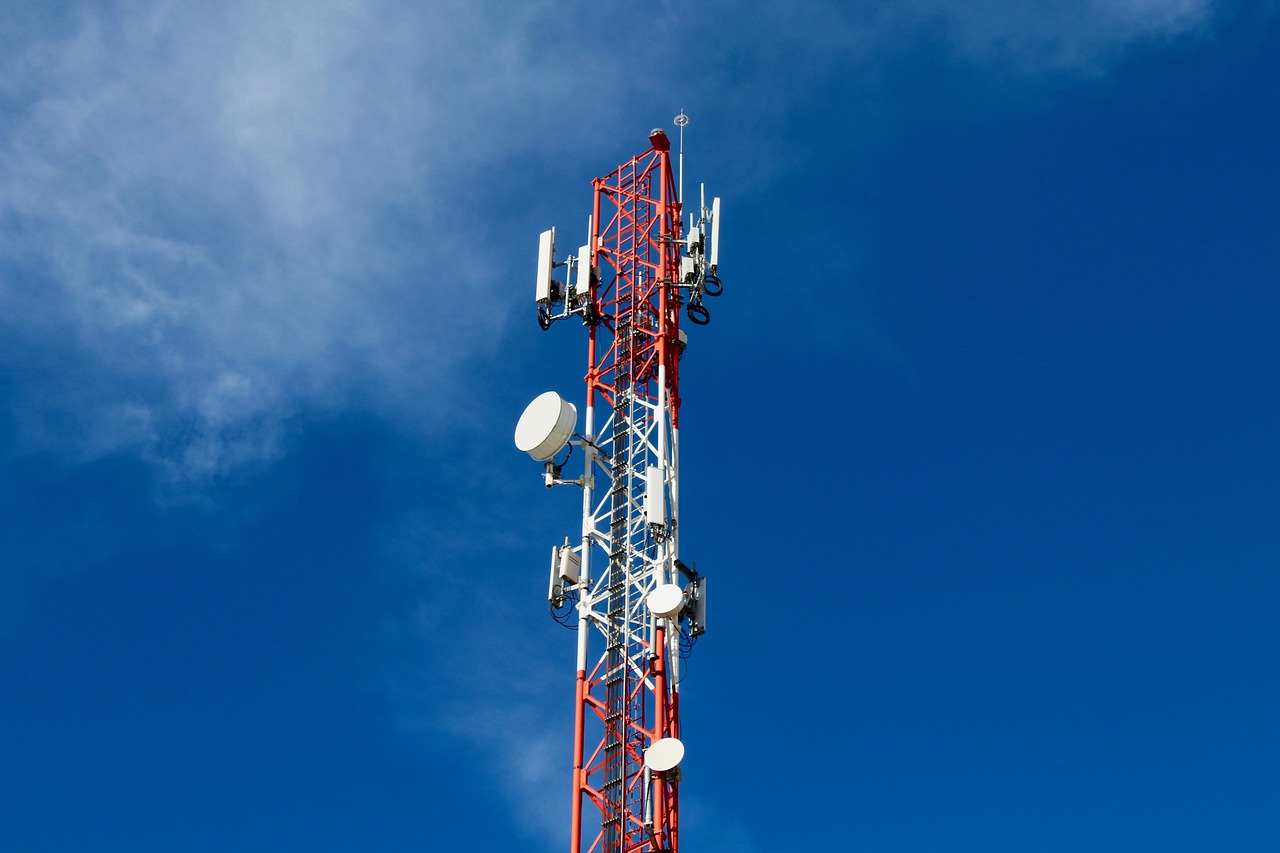
Community Engagement and Support
In the realm of counterinsurgency, community engagement stands as a cornerstone for success. When military forces operate in areas plagued by insurgency, they quickly realize that winning the hearts and minds of the local population is just as crucial as any tactical maneuver. It's not merely about showing force; it's about building trust. Imagine a neighborhood where soldiers are not just seen as enforcers but as protectors and allies. This transformation is essential for undermining insurgent influence and fostering a sense of stability.
Advanced defense systems recognize that effective engagement with communities can significantly alter the dynamics of warfare. By integrating local voices into their operational frameworks, military forces can gain invaluable insights into the socio-political landscape of the area. This approach helps in identifying key community leaders, understanding local grievances, and addressing the root causes of unrest. For instance, when troops collaborate with local leaders, they can better tailor their strategies to reflect the community's needs and aspirations, ultimately reducing the appeal of insurgent ideologies.
Moreover, community engagement involves various activities that promote dialogue and cooperation. These can include:
- Humanitarian Assistance: Providing essential services such as medical care, education, and infrastructure development can help bridge the gap between military forces and civilians.
- Community Meetings: Regularly scheduled gatherings allow military personnel to listen to local concerns and share information about security operations.
- Local Partnerships: Collaborating with non-governmental organizations (NGOs) and community groups can enhance the effectiveness of military operations and foster goodwill.
By prioritizing community engagement, advanced defense systems not only enhance their operational effectiveness but also contribute to long-term stability in conflict zones. This approach transforms the military's role from that of an occupying force to a supportive ally, which can significantly disrupt the insurgent narrative that often portrays the military as an external aggressor.
In conclusion, community engagement and support are not just supplementary strategies; they are essential components of modern military operations against asymmetric threats. By fostering relationships built on trust and mutual respect, military forces can create an environment where peace can thrive, undermining the very foundation of insurgent movements. The real victory lies not in the number of battles won but in the number of hearts and minds gained.
Q1: Why is community engagement important in counterinsurgency?
A1: Community engagement is crucial because it helps build trust between military forces and local populations, which can undermine insurgent influence and foster stability.
Q2: What are some effective community engagement strategies?
A2: Effective strategies include humanitarian assistance, community meetings, and local partnerships with NGOs to address community needs and concerns.
Q3: How does community support impact military operations?
A3: Community support can enhance military operations by providing valuable intelligence, improving situational awareness, and fostering a cooperative environment that reduces conflict.
Q4: Can community engagement lead to long-term peace?
A4: Yes, by addressing the root causes of unrest and building relationships based on trust, community engagement can contribute to lasting peace and stability in conflict zones.

Intelligence Sharing and Collaboration
In the realm of modern warfare, the adage "knowledge is power" has never rung truer. Intelligence sharing and collaboration between military and intelligence agencies are not just beneficial; they are essential for success in counterinsurgency operations. Imagine trying to solve a complex puzzle with only a few pieces; without the full picture, it becomes nearly impossible to make informed decisions. This is the challenge faced by military forces engaged in asymmetric conflicts where the enemy often operates in the shadows, using unconventional tactics to exploit vulnerabilities.
Effective intelligence sharing creates a robust network of information that enhances situational awareness. When military units and intelligence agencies work in silos, vital information can be lost, leading to missed opportunities and, in some cases, catastrophic failures. However, when these entities collaborate, they can pool their resources and insights, creating a comprehensive understanding of the battlefield. This collaboration can take various forms, including:
- Joint Task Forces: These are organized groups that combine personnel from different agencies, fostering a culture of shared objectives and mutual support.
- Real-time Data Sharing: Utilizing advanced communication technologies allows for instantaneous sharing of intelligence, which is crucial in fast-paced operational environments.
- Cross-Training Programs: By training personnel from different agencies together, they develop a better understanding of each other's capabilities and limitations, leading to more effective collaboration.
One of the most significant challenges in intelligence sharing is overcoming the barriers of bureaucracy and inter-agency competition. Each agency has its own protocols, cultures, and sometimes conflicting priorities. To address this, many military organizations have adopted integrated command structures that prioritize collaboration over competition. This shift not only streamlines operations but also builds trust among agencies, which is vital in high-stakes environments.
Moreover, technology plays a crucial role in enhancing intelligence sharing. Advanced software platforms enable secure communication and data exchange, allowing agencies to analyze and act on intelligence more rapidly. For instance, Artificial Intelligence (AI) algorithms can sift through vast amounts of data, identifying patterns and anomalies that human analysts might overlook. This capability is especially beneficial in asymmetric warfare, where the enemy may be using unconventional tactics that require quick adaptation and response.
In conclusion, the effectiveness of counterinsurgency strategies heavily relies on the ability of military and intelligence agencies to share intelligence and collaborate seamlessly. By breaking down silos and fostering a culture of cooperation, these entities can significantly enhance their operational effectiveness and ultimately contribute to greater stability in conflict zones. The future of warfare will undoubtedly hinge on the ability to adapt and innovate in intelligence sharing practices, ensuring that every piece of information is utilized to its fullest potential.
Q: Why is intelligence sharing important in asymmetric warfare?
A: Intelligence sharing is critical because it enhances situational awareness and allows military forces to respond more effectively to unconventional tactics used by adversaries.
Q: What are some barriers to effective intelligence sharing?
A: Barriers include bureaucratic hurdles, inter-agency competition, and differing protocols among agencies that can hinder timely communication and collaboration.
Q: How does technology facilitate intelligence sharing?
A: Technology, particularly advanced communication platforms and AI, enables secure, real-time data sharing and analysis, improving the speed and accuracy of intelligence operations.
Q: What role do joint task forces play in intelligence collaboration?
A: Joint task forces bring together personnel from different agencies to work toward shared objectives, enhancing cooperation and operational effectiveness.

The Future of Defense Against Asymmetric Threats
As we look to the horizon of military strategy, the future of defense against asymmetric threats is not just a matter of adopting new technologies; it’s about reimagining how we approach conflict altogether. The landscape of warfare is continuously evolving, and with it, the challenges posed by non-traditional adversaries. These threats often come from groups that leverage unconventional tactics, exploiting the vulnerabilities of conventional military forces. So, how can modern defense systems adapt to these shifting paradigms?
One of the most significant changes on the battlefield is the integration of artificial intelligence (AI) and machine learning. These technologies are not merely buzzwords; they are pivotal in analyzing vast amounts of data to predict enemy movements and strategies. Imagine having a digital assistant that can sift through terabytes of intelligence to identify patterns that a human might miss. This capability significantly enhances situational awareness and decision-making speed, which are crucial in asymmetric warfare scenarios where time is of the essence.
Moreover, the rise of autonomous systems is set to redefine engagement rules. From drones that can operate independently to ground robots capable of reconnaissance, these systems reduce the risk to human life while increasing operational efficiency. However, with great power comes great responsibility. The ethical implications of deploying autonomous weapons in combat must be carefully considered, ensuring that they are used in compliance with international law and humanitarian principles.
Another area ripe for innovation is cyber warfare. As adversaries increasingly resort to cyber-attacks to disrupt military operations and civilian infrastructure, the need for robust cyber defense mechanisms becomes paramount. Future defense strategies will likely include enhanced cyber capabilities that not only protect critical systems but also enable offensive operations to incapacitate enemy networks. This dual approach is essential for maintaining a strategic advantage in an interconnected world.
Furthermore, the importance of inter-agency collaboration cannot be overstated. The future of defense will see military forces working more closely with intelligence agencies, law enforcement, and even private sector partners. This collaboration is essential for sharing intelligence, resources, and expertise to address the multifaceted nature of asymmetric threats. By fostering a culture of cooperation, defense systems can create a more comprehensive response to evolving challenges.
In addition, the role of community engagement in counterinsurgency efforts will become even more critical. Building trust and rapport with local populations can significantly undermine insurgent influence. Future military strategies will likely focus on integrating community leaders and local stakeholders into operational planning, ensuring that military actions align with the needs and aspirations of the people they aim to protect.
Lastly, as we consider the future, it’s essential to remain agile and adaptable. The threats we face today may not be the same as those we encounter tomorrow. Therefore, defense systems must be designed with flexibility in mind, allowing for rapid adjustments in tactics and strategies in response to emerging threats. Whether it's through technological advancements or shifts in military doctrine, the ability to pivot quickly will be a defining characteristic of successful defense operations in the face of asymmetric warfare.
- What are asymmetric threats? Asymmetric threats refer to challenges posed by adversaries who use unconventional tactics, often leveraging their strengths against the weaknesses of traditional military forces.
- How is technology changing military strategies? Technologies like AI, drones, and cyber capabilities are enhancing situational awareness, operational efficiency, and the ability to respond to threats more effectively.
- Why is community engagement important in counterinsurgency? Engaging with local communities helps build trust and reduces insurgent influence, making military operations more effective in stabilizing conflict zones.
- What role does collaboration play in modern defense? Collaboration among military, intelligence, law enforcement, and private sectors enhances resource sharing and intelligence gathering, leading to more effective responses to asymmetric threats.
Frequently Asked Questions
- What is asymmetric warfare?
Asymmetric warfare refers to conflicts where opposing forces differ significantly in military capabilities or tactics. Typically, this involves a weaker opponent using unconventional strategies to exploit the vulnerabilities of a stronger adversary. Think of it like a David vs. Goliath scenario, where the smaller force relies on agility, deception, and guerrilla tactics to outmaneuver the larger, more traditional military force.
- How do advanced defense systems combat asymmetric threats?
Advanced defense systems utilize cutting-edge technologies like drones, cyber warfare tools, and artificial intelligence to enhance their effectiveness against asymmetric threats. These technologies allow for better surveillance, quicker decision-making, and more precise strikes, enabling conventional forces to adapt to the unpredictable tactics of insurgents or non-state actors.
- What role do drones play in modern warfare?
Drones, or Unmanned Aerial Vehicles (UAVs), have revolutionized military operations by providing crucial intelligence, surveillance, and strike capabilities without risking human lives. They can monitor enemy movements, gather data, and even engage targets, making them invaluable in asymmetric warfare where traditional troop deployments may be too risky.
- Why is cyber warfare important in asymmetric conflicts?
In today's digital age, cyber warfare is a game-changer in asymmetric conflicts. It allows one side to disrupt the enemy's communication, logistics, and operational capabilities without engaging in direct combat. Protecting critical infrastructure from cyber attacks is essential for maintaining an advantage in modern warfare.
- What are counterinsurgency strategies?
Counterinsurgency strategies are tactics employed to combat insurgent forces and stabilize conflict zones. These strategies often involve a combination of military action, community engagement, and intelligence sharing to undermine insurgent influence and foster trust within local populations. It's about winning hearts and minds while ensuring security.
- How do advanced defense systems integrate community engagement?
Advanced defense systems recognize the importance of community engagement in counterinsurgency efforts. By building trust and working collaboratively with local communities, military forces can reduce the appeal of insurgent groups and promote stability. This approach often includes outreach programs, humanitarian assistance, and local partnerships.
- What does the future hold for defense against asymmetric threats?
The future of defense against asymmetric threats will likely see even greater reliance on technological advancements. As new challenges emerge, military doctrines will adapt, focusing on integrating artificial intelligence, enhanced cyber capabilities, and advanced reconnaissance tools to stay ahead of potential adversaries. It's a continuously evolving battlefield.



